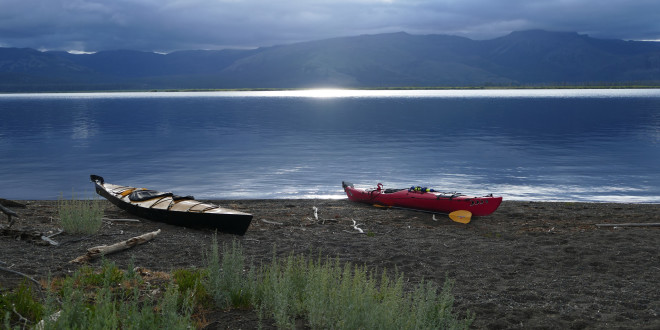One Wyoming legislator is looking to open parts of Yellowstone National Park and Grand Teton National Park to paddling.
Introduced by U.S. Representative Cynthia Lummis (WY), the “Yellowstone and Grand Teton Paddling Act” or the Lummis amendment would open up 400 plus miles of stream and river to “hand-propelled watercraft.” The act would also remove any requirement to assess the environmental impact of paddling. The bill passed the U.S. House Committee on Natural Resources, by a vote of 23-15, and is set to go onto the floor of the full House.
This is not the first time Lummis has tried to open portions of Yellowstone and Grand Teton to paddling. In 2014, her amendment passed the House but was shot down in the Senate. National Park Service officials also criticized it because it would have barred park administrators from deciding what type of watercraft would be allowed.
Under this Lummis amendment, “hand-propelled watercraft” encompasses canoes, kayaks (inflatable or otherwise), packrafts, and rafts. Inflatable tubes would still be prohibited under the law.
The bill has already drawn the ire of environmental advocates and officials who say the bill is at best unnecessary and at worst an endangerment to backcountry ecosystems that see little to no disturbance. From Montana Public Radio:
The amendment listed sections of 50 rivers and streams where paddling would be permitted, including remote waterways such as the Firehole, Gallatin, Lamar and Snake rivers. Portions of some of those rivers already are open for recreational use outside the park and, in the case of the Snake River, inside Grand Teton.
“Many of these rivers and streams are well-known to people in Montana and Wyoming,” said Kristen Brengel, policy director for the [National Parks Conservation Association]. “They are places where cutthroat trout, grizzly bears — you name it — tend to congregate. We’ve spent all this time protecting these species, and this isn’t the best way to manage Yellowstone and Grand Teton national parks.”
The restrictions the bill targets were imposed in Yellowstone in 1950, when most rivers and streams were closed to prevent overfishing, park officials said.
Proponents of the bill say it would allow NPS officials to create their own regulations, something the Parks already do with other recreational activities. From Jackson Hole News & Guide:
The amendments would give the parks complete authority to manage and restrict paddling, as they do with any other recreational activity, Lummis press secretary Joe Spiering wrote in an email.
“Several concerns were raised about the burden on the Park Service of studying all of the rivers and streams in the park for suitability for paddling,” Spiering wrote. “Rep. Lummis’ amendment would significantly alleviate this burden by requiring a rulemaking to allow paddling on specific rivers and streams composing roughly 10 percent of the river and stream miles in the park.”
Portions of these selfsame rivers are already open for recreational use outside the parks—but the real concern is what happens inside Park boundaries.
Neither Yellowstone nor Grand Teton officials have commented on the bill at this time. And it remains to be seen to what extent paddling would be instituted in select backcountry regions, if the bill does propose to let the NPS regulate “hand-paddled watercraft.”
 Yellowstone Insider Your Complete Guide to America's First National Park
Yellowstone Insider Your Complete Guide to America's First National Park





